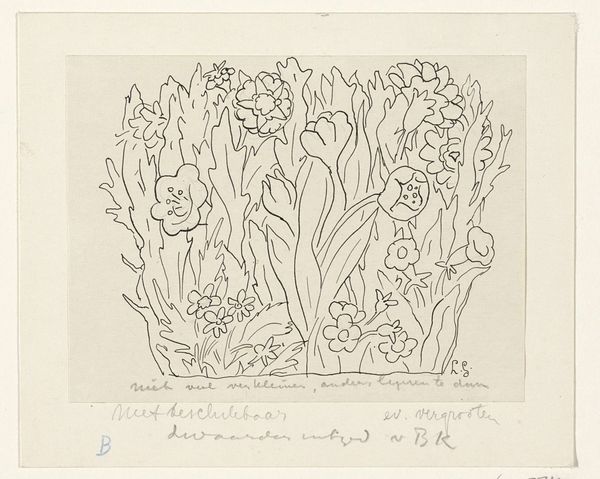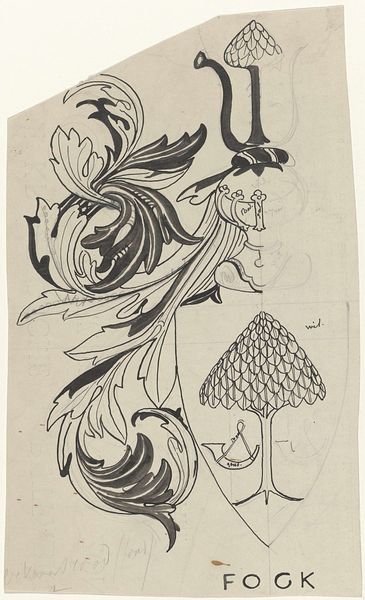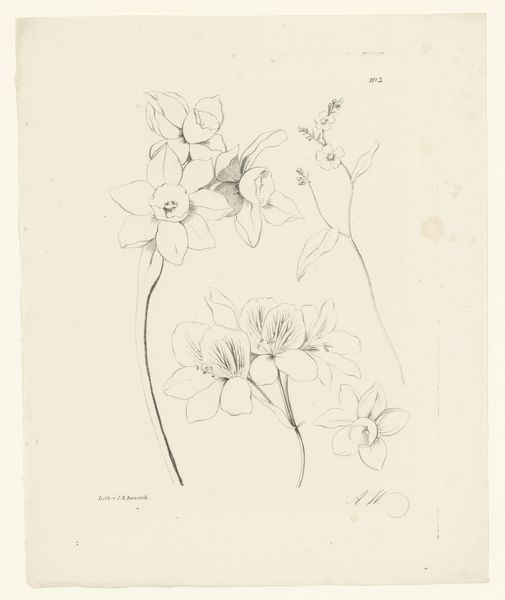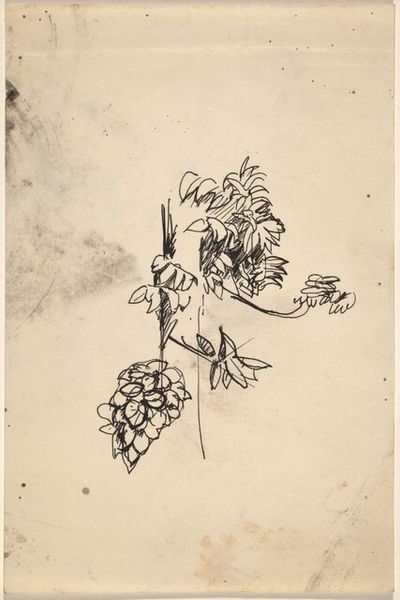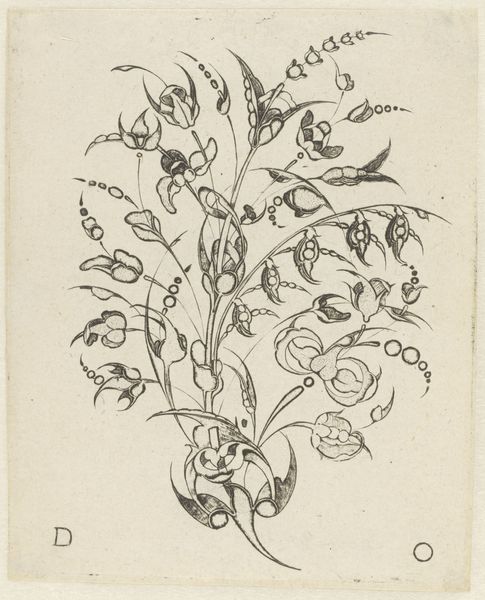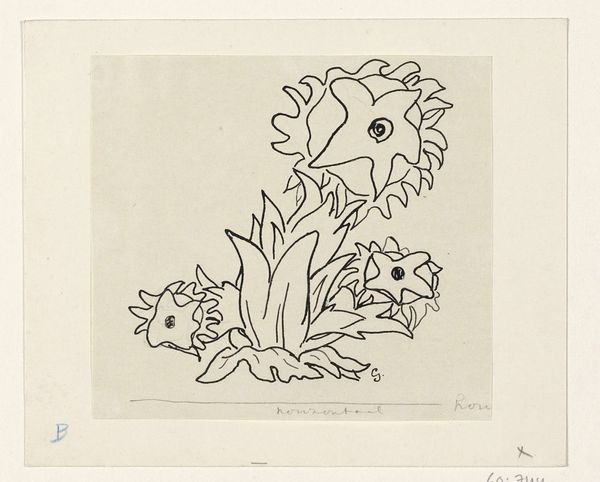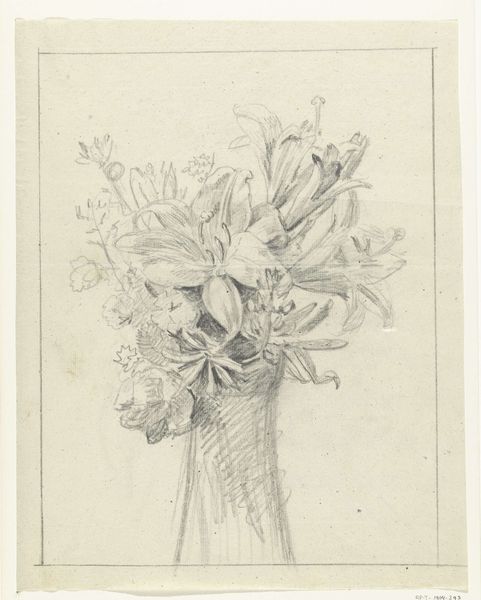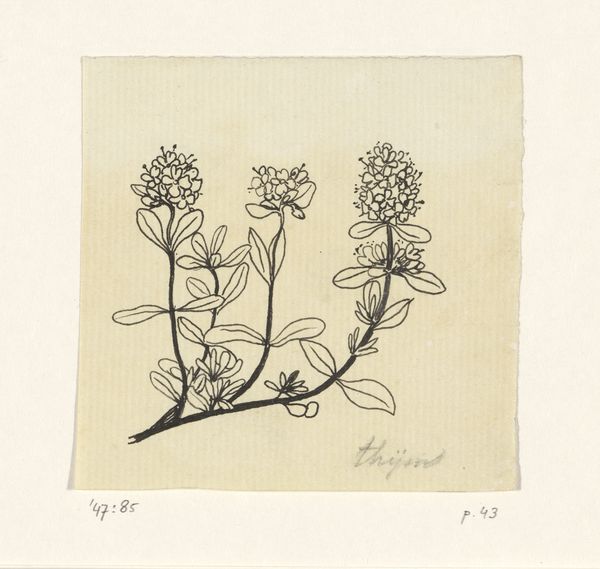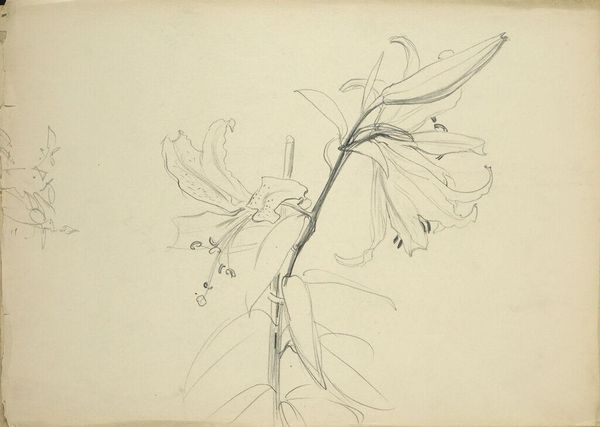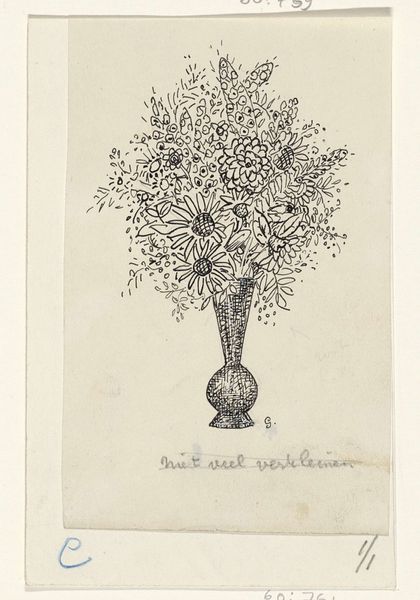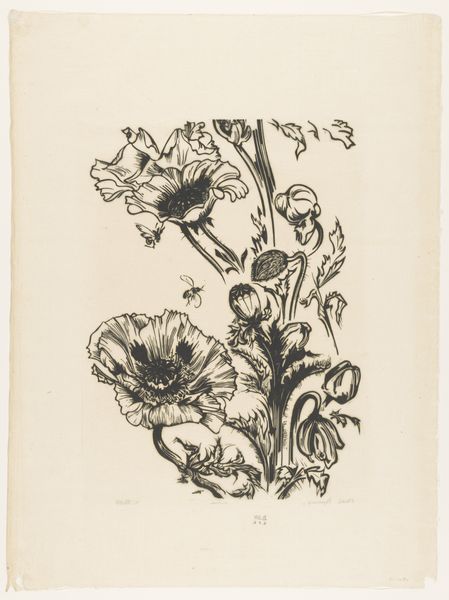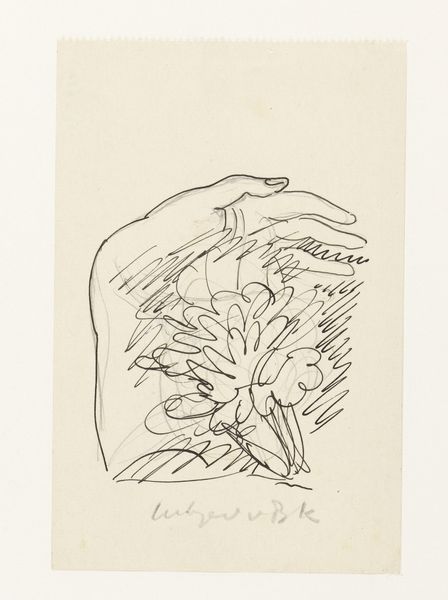
drawing, paper, ink
#
drawing
#
quirky illustration
#
art-nouveau
#
blue ink drawing
#
childish illustration
#
cartoon sketch
#
figuration
#
paper
#
personal sketchbook
#
ink
#
ink drawing experimentation
#
line
#
sketchbook drawing
#
cartoon style
#
sketchbook art
#
doodle art
#
modernism
Dimensions: height 174 mm, width 133 mm
Copyright: Rijks Museum: Open Domain
Editor: We’re looking at Leo Gestel’s “Duif op een tak van een kastanjeboom,” or “Dove on a branch of a chestnut tree,” made sometime between 1891 and 1941. It’s a charming ink drawing. I am intrigued by the almost childlike quality, this doodle style that seems to simplify form to the point of caricature. What cultural trends might have influenced Gestel's stylistic choices? Curator: I find myself drawn to that simplification as well. Gestel was working during a time of significant societal shift and artistic experimentation. There's the burgeoning influence of modernism and art-nouveau. Artists started to explore abstraction as well as new modes of personal expression, moving away from strictly academic and historical themes. We should consider what messages he might send using simplicity. Why choose the medium of a sketchbook-like drawing for what looks like a final version? Editor: So you think the chosen style is deliberate? A push against formal artistic conventions? Curator: Exactly. Think about the societal role of art. Was Gestel making art for a broad public, or for a smaller group of like-minded artists? His deliberate simplicity may have been an act of rebellion against elitist notions of high art; against what was being exhibited in major museums. He invites viewers to reconsider the function and accessibility of art itself. Note the location of this drawing inside of the Rijksmuseum: can art really exist outside the bounds of political considerations? Editor: That is intriguing! It almost anticipates later movements like Pop Art, but in a more understated way. The context of the sketchbook medium complicates it too. Thanks, I hadn't considered how revolutionary such a simple drawing could be. Curator: And that's where the fun lies – looking beyond the surface and exploring art’s public and political implications! It speaks volumes about how the perception of art can be deeply impacted by socio-political movements.
Comments
No comments
Be the first to comment and join the conversation on the ultimate creative platform.
